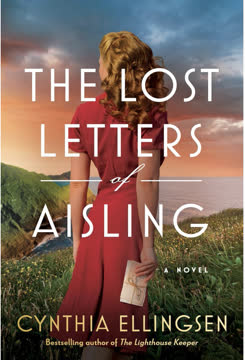Plot Summary
Abandonment and Blue's Beginnings
In the searing Nevada heat, a young woman's desperate choices lead her to abandon her toddler, Blue, in the truck of a quiet Native American man, Jimmy Echohawk. Blue's earliest memories are of drifting from place to place, learning to carve wood and survive in silence. When Jimmy disappears, Blue is thrust into the foster system and eventually lands with Cheryl, a neglectful guardian. Blue's sense of self is shaped by loss, abandonment, and the ache of not knowing her origins. Her name, her birthday, even her ethnicity are mysteries, and she grows up feeling like a discarded object, a "little blackbird pushed from the nest." The trauma of her beginnings becomes the lens through which she views the world, wary and defensive, yet fiercely resilient.
The Teacher with Stories
Blue's senior year brings Mr. Wilson, a young British teacher whose passion for history and literature is infectious. He challenges his students to see history as story, to write their own narratives, and to question the myths they believe about themselves. Blue, used to intimidating teachers and classmates alike, finds herself both irritated and intrigued by Wilson's refusal to be cowed by her bravado. His assignments force her to confront her own history, and his gentle persistence begins to chip away at her defenses. Through classroom debates and personal essays, Blue is drawn into a world of stories—both ancient and her own—that begin to reshape her understanding of herself.
Carving Identity from Pain
Blue's solace is found in carving—transforming gnarled, discarded wood into art. Taught by Jimmy, carving is both a connection to her lost father figure and a metaphor for her own life: stripping away the rough exterior to find something beautiful beneath. Her art is raw, abstract, and deeply personal, reflecting her struggles with identity, belonging, and the scars of her past. As she navigates the challenges of school, work, and a fraught home life, carving becomes her way of processing pain and asserting control over a world that has so often rendered her powerless.
Myths, Labels, and Truths
Wilson's lessons on Greek myths and the power of belief resonate with Blue, who has internalized the labels and judgments of others—"slut," "bitch," "discarded." He asks his students to examine the myths they tell about themselves and to consider how those beliefs shape their choices. Blue's self-image is a patchwork of shame and bravado, but Wilson's insistence that everyone's story matters begins to plant seeds of doubt in her certainty that she is unworthy. Through writing assignments and classroom discussions, Blue starts to question whether her past must define her future, and whether she can shed the labels that have clung to her for so long.
The Rubicon of Loss
Blue's defining moment comes with the loss of Jimmy, the only person who ever made her feel wanted. The discovery of his death shatters her last hope of rescue and plunges her into despair. In a moment of overwhelming grief, she attempts to end her life, only to be saved at the last moment. The trauma leaves her more guarded than ever, but also marks the beginning of a slow, painful reckoning with her own survival. Wilson's classroom becomes a space where she is forced to revisit these moments, to write about her "Rubicon"—the point of no return—and to consider how even the most painful losses can become turning points.
Friends, Outsiders, and Masks
Despite her efforts to keep others at arm's length, Blue is gradually drawn into the orbit of Manny and Graciela, siblings from her apartment complex who adopt her as their own. Their friendship is both a comfort and a challenge, forcing Blue to confront her own capacity for care and loyalty. The dynamics of high school—cliques, rumors, and the constant negotiation of identity—play out in the background, but Blue's relationships with outsiders like Manny, and her complicated feelings for Wilson, begin to offer glimpses of a different kind of belonging. Yet, the masks she wears—tough, sexy, untouchable—are hard to remove, and the risk of vulnerability is ever-present.
The Past Unraveled
A school shooting, triggered by betrayal and shame, brings Blue's world crashing down. Manny, pushed to the brink by the exploitation of his sister and the cruelty of others, brings a gun to school. Blue's intervention prevents tragedy, but the event exposes the fragility of the lives around her and the destructive power of secrets. The aftermath forces Blue to confront her own complicity in cycles of pain and to reckon with the ways her actions—intentional or not—affect those she cares about. The past, both her own and others', refuses to stay buried, demanding acknowledgment and change.
Violence and Vulnerability
The fallout from the shooting, and the exposure of intimate betrayals, leaves Blue reeling. Her relationships with men—marked by exploitation, secrecy, and fleeting comfort—are thrown into stark relief. The revelation that a private photo of her has been shared without her consent is a new violation, compounding old wounds. Yet, in the midst of shame and anger, Blue finds unexpected solace in music—Wilson's cello, played in the empty school, becomes a balm, awakening a longing for grace and redemption. The possibility of being loved, of being seen as more than her scars, begins to take root.
Shame, Scandal, and Survival
A positive pregnancy test forces Blue to confront the consequences of her choices and the weight of her reputation. The prospect of motherhood is both terrifying and clarifying, bringing into focus the cycles of abandonment and longing that have shaped her life. As she navigates the judgment of others, the indifference of her guardian, and the absence of the child's father, Blue is forced to make decisions about her future and the future of her unborn child. The question of whether she can break the cycle—whether she can give her child a better life—becomes central.
Music, Grace, and Redemption
In a moment of despair, Blue finds herself alone in the school, listening to Wilson play "Amazing Grace" on his cello. The music becomes a catalyst for a spiritual awakening, a plea for the ugliness inside her to be taken away. For the first time, she allows herself to hope for redemption, to believe that she might be worthy of love and forgiveness. This experience marks a turning point, softening her defenses and opening her to the possibility of change. Wilson's steadfast presence, his willingness to see her as more than her past, becomes a lifeline.
The Art of Becoming
Blue's art, once a private refuge, becomes a source of recognition and opportunity. With the support of Wilson and his sister Tiffa, her carvings are displayed in a gallery, and she begins to imagine a future beyond survival. Moving into her own apartment, creating a space that is truly hers, and finding a measure of independence, Blue starts to shed the trappings of her old life. The process is not without pain—her relationship with Wilson is fraught with longing and miscommunication—but the possibility of becoming someone new, of being seen and valued, becomes real.
Pregnancy and Consequence
As her pregnancy progresses, Blue grapples with the reality of becoming a mother. The decision to place her child for adoption with Tiffa and Jack is both an act of love and a source of profound grief. The birth is marked by pain and longing, but also by the hope that her daughter will have the life she never did—wanted, cherished, and surrounded by family. The act of letting go is both a sacrifice and a liberation, forcing Blue to confront the depth of her love and the strength of her will to break the cycle of abandonment.
Choices, Labels, and Letting Go
Wilson's assignments about labels and self-definition come full circle as Blue is forced to confront the words that have defined her—both those imposed by others and those she has chosen for herself. The act of writing her own history, of claiming her story and her future, becomes an act of liberation. The process of letting go—of her child, of her shame, of her old self—is ongoing, but each step is a movement toward freedom. The support of friends, the recognition of her art, and the possibility of love offer new ways of being.
A New Nest
Blue's new apartment, filled with color, art, and the echoes of music from above, becomes a sanctuary. The process of healing is slow and uneven, marked by setbacks and moments of despair, but also by laughter, creativity, and the tentative growth of trust. Her relationship with Wilson deepens, moving from friendship to something more, though both are wary of the risks. The presence of Melody, her daughter, in Tiffa's life is both a comfort and a source of pain, but the bonds of chosen family begin to offer a sense of belonging that Blue has never known.
The Gift of Family
The search for Blue's origins intensifies, leading her to seek out her birth family and the truth about her past. The process is fraught with uncertainty and fear, but also with the hope of understanding and closure. The discovery that Jimmy was her grandfather, and the unraveling of the tangled web of secrets and abandonment, brings both pain and healing. The act of reclaiming her name, her history, and her place in the world is both a gift and a challenge, forcing Blue to reconcile the past with the future she is building.
Adoption and Acceptance
Blue's relationship with Melody, now her adopted daughter's child, is complex and bittersweet. The act of giving her up is both a wound and a source of pride, a testament to her capacity for love and selflessness. The ongoing connection with Tiffa and Jack, and the knowledge that Melody is cherished and safe, offers a measure of peace. Blue's understanding of motherhood, family, and love is transformed, moving beyond blood and possession to embrace a broader, more generous vision.
The Search for Self
The final search for her birth parents, and the confrontation with the truth of her origins, is both harrowing and necessary. The process of uncovering secrets, facing painful realities, and claiming her story is both an act of courage and a leap of faith. The knowledge that she is both the product of abandonment and the architect of her own future becomes a source of strength. The support of Wilson, the acceptance of her grandmother, and the reconciliation with her past allow Blue to finally begin to see herself as whole.
Roots and Revelations
The revelation that Jimmy was her grandfather, and the unraveling of the family's tangled history, brings both closure and new beginnings. The act of telling her story—of placing herself in the lineage of hawks and stars, of myths and legends—becomes a way of claiming her place in the world. The scars remain, but they are no longer sources of shame; they are marks of survival, of transformation, and of the possibility of love.
The Story Retold
In the end, Blue's story is one of reclamation and reinvention. The "little blackbird pushed from the nest" becomes a hawk, a creator, a lover, and a mother—wanted, cherished, and unafraid. The act of telling her story, of carving beauty from pain, becomes both her legacy and her liberation. With Wilson by her side, and the possibility of family and belonging within reach, Blue steps into a future that is hers to shape—a different Blue, at last.
Characters
Blue Echohawk
Blue is a young woman forged by abandonment, loss, and the relentless search for identity. Left by her mother and raised by Jimmy Echohawk, she grows up rootless, learning to survive through silence, art, and a tough exterior. Her relationships are marked by both longing and fear—she craves connection but is terrified of vulnerability. Blue's journey is one of transformation: from discarded child to artist, from outcast to beloved, from mother to selfless giver. Her psychological landscape is shaped by trauma, shame, and resilience, but also by a fierce will to break the cycles of her past. Through carving, writing, and the slow work of trust, she learns to claim her story and her worth.
Darcy "Mr. Wilson" Wilson
Wilson is a young British teacher whose passion for history and literature is matched by his empathy and insight. Haunted by his own losses and the weight of family expectations, he finds purpose in teaching and in helping students like Blue see themselves as the authors of their own stories. His relationship with Blue is both professional and deeply personal, marked by mutual challenge, respect, and growing affection. Wilson's psychological journey is one of moving from detachment to engagement, from propriety to passion, and from observer to participant in Blue's life. His steadfastness, humor, and willingness to confront pain make him both a catalyst for Blue's growth and a partner in her healing.
Jimmy Echohawk
Jimmy is Blue's surrogate father and, as revealed, her grandfather. A quiet, gentle Native American man, he teaches Blue the art of carving and the value of patience, observation, and resilience. His own life is marked by loss and regret, particularly the separation from his daughter and the choices that led to Blue's abandonment. Jimmy's presence in Blue's life is both a source of comfort and a reminder of all that has been lost. His legacy is one of quiet strength, creativity, and the possibility of redemption, even in the face of overwhelming pain.
Tiffa Snook
Tiffa is Wilson's vibrant, compassionate sister, an art curator who becomes both mentor and friend to Blue. Her inability to have children and her longing for family make her both a source of support and the eventual adoptive mother of Blue's child. Tiffa's warmth, humor, and generosity offer Blue a model of unconditional love and acceptance. Her relationship with Blue is transformative for both, allowing each to find fulfillment and healing through the act of giving and receiving.
Manny Rivas-Olivares
Manny is Blue's neighbor and self-appointed little brother, a sweet, effeminate boy who struggles with acceptance in a harsh world. His fierce loyalty to his sister Graciela and his friendship with Blue are sources of both joy and tragedy. Manny's psychological journey is marked by the pain of rejection, the trauma of violence, and the longing for belonging. His story is a reminder of the collateral damage of secrets, shame, and the failure of systems meant to protect.
Graciela Rivas-Olivares
Graciela is Manny's younger sister, a dreamy, impressionable girl who looks up to Blue and is drawn into the dangers of seeking validation from the wrong people. Her vulnerability and naivete make her both a victim and a catalyst for the events that unfold. Graciela's journey is one of painful awakening, as she learns the costs of misplaced trust and the importance of self-worth.
Cheryl Sheevers
Cheryl is Blue's foster mother, a woman hardened by her own disappointments and addictions. Her relationship with Blue is marked by indifference, resentment, and occasional flashes of care. Cheryl's presence in Blue's life is both a source of pain and a reminder of the cycles of neglect that Blue is determined to break. Her character serves as a foil to the possibilities of chosen family and the power of self-determination.
Stella Hidalgo
Stella is Blue's maternal grandmother, a woman whose ambition and choices have far-reaching consequences. Her role in the family's history is both heroic and tragic—she fights for her people but loses her daughter and granddaughter in the process. Stella's psychological journey is one of reckoning with the costs of sacrifice, the pain of loss, and the hope of reconciliation. Her relationship with Blue offers a chance for healing and the reclamation of family.
Winona Hidalgo
Winona is Blue's birth mother, a young woman overwhelmed by trauma, addiction, and the weight of her own abandonment. Her choices—leaving Blue, succumbing to drugs, and ultimately being murdered—cast a long shadow over Blue's life. Winona's character is a study in the tragic consequences of unresolved pain and the ways in which cycles of loss perpetuate themselves. Her absence is as defining for Blue as her presence might have been.
Ethan Jacobsen
Ethan is Blue's biological father, a man who rejects responsibility and disappears from her life before she is born. His later life is unremarkable, marked by ordinariness and the quiet shame of past choices. His brief encounter with Blue as an adult is awkward and unsatisfying, but it offers closure and the possibility of moving forward without the weight of unanswered questions.
Plot Devices
Story as History, History as Story
The novel's structure is built around the idea that history is not just a record of events but a story we tell ourselves and others. Wilson's classroom assignments—writing personal histories, examining myths, and questioning labels—serve as both plot devices and metaphors for Blue's journey. The act of storytelling becomes a means of reclaiming agency, challenging shame, and envisioning new possibilities. The interplay between personal narrative and historical narrative blurs the boundaries between past and present, self and other.
Carving as Metaphor
Blue's art is both a literal and symbolic process of carving away the rough, unwanted parts of herself to reveal something beautiful and unique. The act of carving—removing, shaping, and polishing—mirrors her psychological journey, as she learns to let go of pain, embrace imperfection, and create meaning from suffering. The sculptures themselves become plot devices, marking stages of growth, recognition, and acceptance.
Foreshadowing and Recurring Motifs
The recurring imagery of birds—blackbirds, hawks, swans—serves as both foreshadowing and thematic anchor. Myths and legends, retold and reinterpreted, offer Blue a framework for understanding her own story and the possibility of transformation. The motif of the "nest"—home, safety, belonging—runs throughout, culminating in Blue's creation of her own "new nest" and the reclamation of her place in the world.
Parallel Journeys and Mirrored Relationships
The novel employs parallel structures—Wilson's journey of self-discovery mirrors Blue's, Tiffa's longing for motherhood echoes Blue's own, and the cycles of abandonment and rescue repeat across generations. These mirrored relationships serve to highlight both the universality of pain and the uniqueness of each person's path to healing. The interplay between past and present, loss and redemption, is woven through the narrative, creating a sense of continuity and hope.
Letters, Files, and the Uncovering of Truth
The quest to uncover Blue's origins is structured as a mystery, with clues, files, and revelations unfolding gradually. The use of official documents, police reports, and DNA results grounds the story in realism and heightens the emotional stakes. The act of seeking, finding, and confronting the truth becomes both a plot engine and a metaphor for the work of healing.
Analysis
A Different Blue is a powerful meditation on identity, trauma, and the redemptive power of story. Amy Harmon crafts a narrative that is both deeply personal and universally resonant, exploring the ways in which our histories—both inherited and chosen—shape who we become. The novel interrogates the labels and myths that bind us, challenging readers to consider how beliefs about ourselves can both limit and liberate. Through Blue's journey, Harmon examines the cycles of abandonment, shame, and survival that haunt so many, but she also offers a vision of hope: that through art, love, and the courage to confront the past, it is possible to carve out a new self. The relationship between Blue and Wilson is a testament to the transformative power of empathy and the importance of being truly seen. The novel's modern relevance lies in its nuanced portrayal of trauma, its critique of societal judgment, and its celebration of chosen family and self-acceptance. Ultimately, A Different Blue is a story about the possibility of change—not by erasing the past, but by reclaiming it, retelling it, and daring to imagine a different future.
Last updated:
Review Summary
A Different Blue receives mostly positive reviews, with readers praising its emotional depth, character development, and themes of self-discovery and redemption. Many appreciate the slow-burn romance between Blue and Wilson, finding their relationship authentic and moving. The book's incorporation of history, art, and literature is well-received. Some readers find the pacing slow or struggle to connect with the characters, but overall, the novel is lauded for its powerful storytelling and the author's ability to evoke strong emotions.








